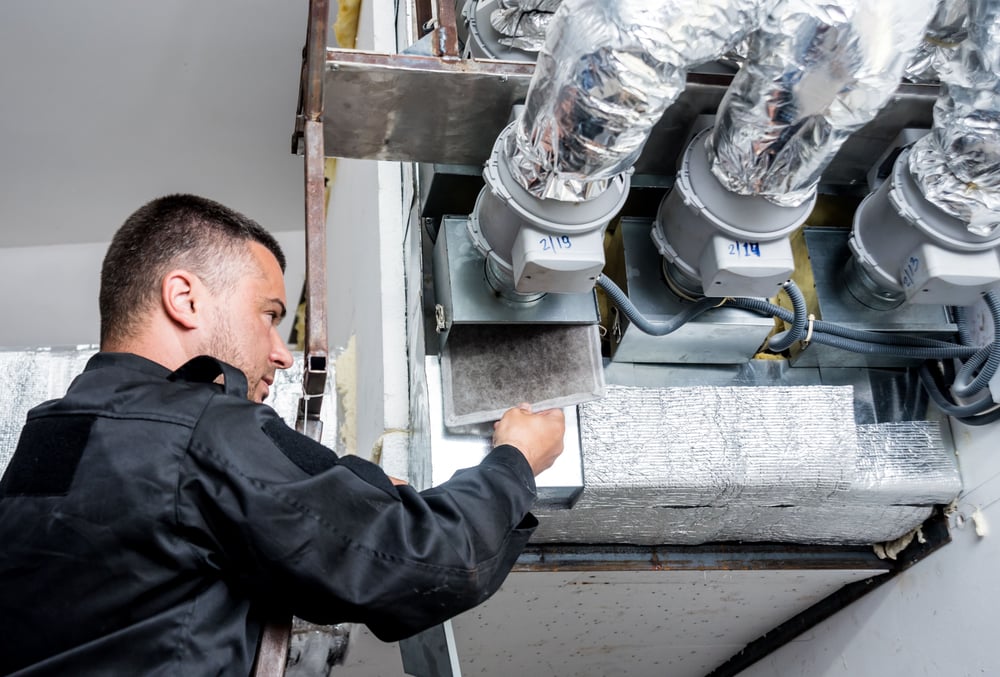Working as a facility maintenance manager involves servicing numerous types of appliances and systems using a wide range of methods and strategies. To be successful in the facility maintenance field, you need to know the difference between existing types of maintenance methods and how and when they’re applied.
Here’s a look into the most widely spread types of maintenance.
Preventive Maintenance
Preventive, or preventative, maintenance is aimed at, you guessed it, preventing failures from happening. The major goal of this maintenance strategy is to catch problems and fix them before they snowball into a serious issue. This type of proactive facility maintenance approach includes regular inspections to check for signs of wear and tear, cleaning, minor repairs and damaged parts replacement, lubrication, etc. The most significant benefit of preventive maintenance is keeping assets in good working condition and reducing unplanned downtime. For example, as a senior care facility manager, you don’t want your AC system to break down on a scorching July day; that’s why regular checks are required.
Because the focus of preventive maintenance is equipment and various systems, for example, HVAC, the main pros are also asset-related:
- The number of asset breakdowns is minimized.
- There’s almost no unplanned downtime.
- Assets’ productive life gets longer.
- The overall work environment is safer.
However, relying only on this maintenance type has several downsides. Depending on the number of assets you have to track, preventive maintenance can turn into a very labour-intensive task and take a lot of man-hours. Besides, it doesn’t eliminate catastrophic failures not related to maintenance.
Another thing to keep in mind if you’re going to stick to this strategy is that it requires a lot of planning and documentation. You should have a reliable way to organize and store information. For example, a CMMS or facilities management software can help reduce or even completely eliminate the need for keeping paper copies and misleading spreadsheets. When set up correctly, CMMS can send your team reminders and notifications of upcoming checks, repairs, and inspections.
Condition-Based Maintenance
Condition-based maintenance is often considered to be an advanced alternative to preventive maintenance. Instead of being inspected according to a specific schedule, assets and systems are closely observed for changes that might indicate upcoming crisis failure.

With condition-based maintenance, maintenance managers monitor all the operating systems and identify variables that could impact proper functioning, like temperature, noises, power, the presence or absence of moisture, etc. Since all assets and systems have different factors affecting their operation, having that specified in your CMMS might be helpful. For example, with Maintenance Care, you can add notes to work orders and leverage the DetSet feature.
A deeper dive into condition-based maintenance is predictive maintenance.
Predictive Maintenance
Predictive maintenance also refers to a specific kind of condition-based method in which systems are 24/7 monitored via sensors that are attached to parts of the system and provide real-time data to software. The software then analyzes this data and warns maintenance technicians and managers of the readings that exceed maximum or minimum limits set during the initial set-up.
Predictive maintenance might be the most advanced and intensive type of maintenance because there is a lot of data to analyze.
Corrective Maintenance
Corrective maintenance method is chosen when a problem comes up while working on another work order. With corrective maintenance, issues are caught right on time.

For example, during a planned maintenance check, a maintenance technician notices that the pressure in an HVAC system is not at its required level. Corrective maintenance activities are then scheduled to repair the asset and fix the issue. Since corrective maintenance issues are identified right on time, this strategy decreases emergency repairs and increases overall safety.
Of course, you don't have to stick to one strategy only. The secret lies in proper combination and knowing when to rely on which maintenance method. A good thing is that a proper CMMS solution can help you with whatever strategy your maintenance team picks. Feel free to reach out to us to find out how Maintenance Care can support your preventive, predictive, condition-based, and corrective maintenance activities.








